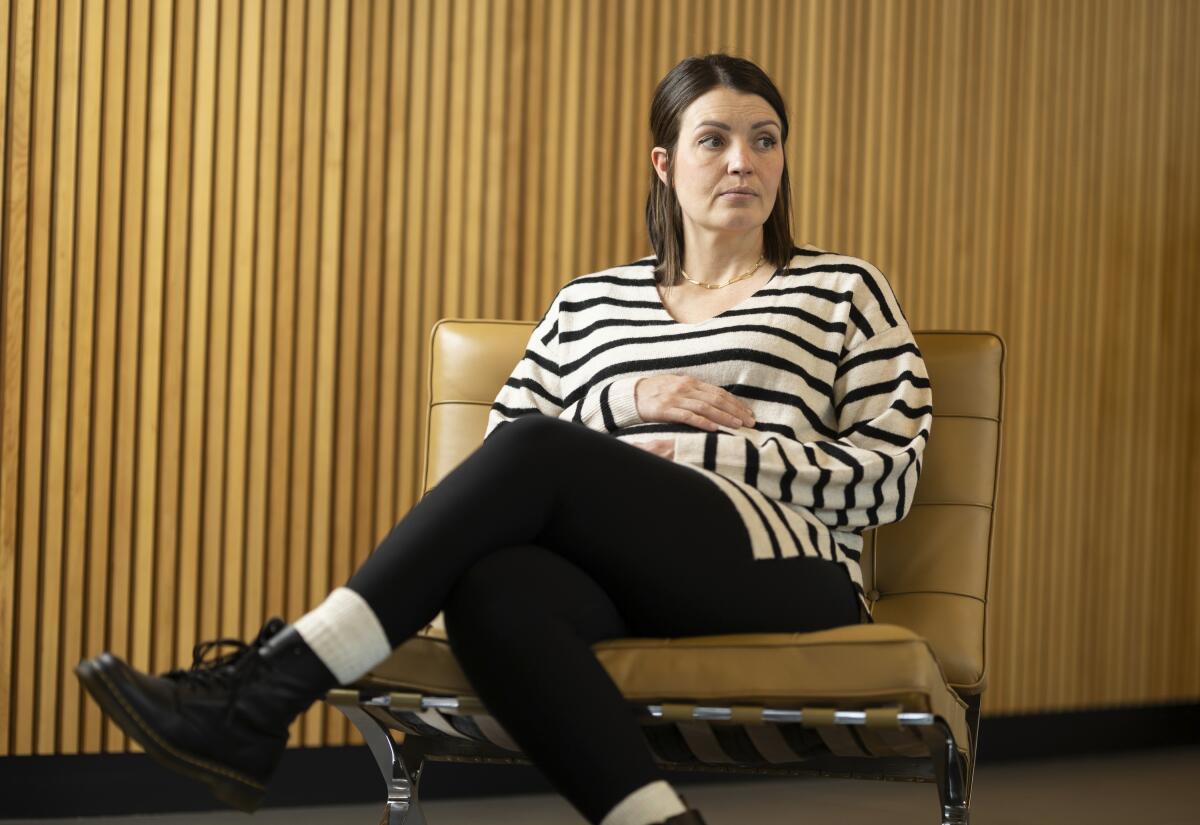Abortion delays have grown more common in the U.S. since Roe vs. Wade was overturned

A woman whose fetus was unlikely to survive called more than a dozen abortion clinics before finding one that would take her, only to be put on weeks-long waiting lists. A teen waited seven weeks for an abortion because it took her mother that long to get her an appointment. Others seeking the procedure faced waits because they struggled to travel hundreds of miles for care.
Such obstacles have grown more common since Roe vs. Wade was overturned in June 2022, doctors and researchers say, causing delays that can lead to abortions that are more complex, costly and in some cases riskier — especially as pregnancies get further along.
About half of U.S. states now have laws that ban or restrict access to abortion. Because of that, many clinics don’t offer the procedure, which has increased demand for appointments at the remaining providers.
At various points since Roe, waits in several states stretched for two or three weeks, and some clinics had no available appointments, according to results of a periodic survey spearheaded by Middlebury College economics professor Caitlin Myers and recently provided to the Associated Press. Doctors and researchers say even as wait times have lessened, people still encounter other challenges, like planning and paying for travel, taking time off work and finding child care.
“All of those things can contribute to delays, and then it kind of becomes like this vicious circle,” said Dr. Daniel Grossman, an OB-GYN at UC San Francisco, who was co-author of a research report earlier this year that compiled anecdotes from healthcare providers after Roe was overturned.
The Palestinian cause — and hostility toward Israel — has shifted from the sidelines of student activism to a robust political movement at U.S. colleges.
People may miss the window for medication abortions, which are not generally offered past 10 to 11 weeks gestation. A dwindling number of clinics provide abortions as people move through the second trimester, which begins at 13 or 14 weeks. Costs for the procedure change, too, from up to $800 in the first trimester to $2,000 or more in the second trimester.
“While abortion is safe at all points in pregnancy,” with an overall complication rate of 2%, it “does get more complicated as the pregnancy continues,” said Dr. Colleen McNicholas, chief medical officer at Planned Parenthood of the St. Louis Region.
At least 66 clinics in 15 states stopped providing abortions in the 100 days after Roe was overturned, according to an analysis last year by the Guttmacher Institute, a research group that supports abortion rights.
The necessity for people to travel out of state is at the root of abortion delays. Planned Parenthood of the St. Louis Region’s health center in Fairview Heights, Ill., saw a 715% increase in patients from outside of Illinois or Missouri in the year after Roe.
The ongoing Myers Abortion Appointment Availability Survey called more than 700 facilities across the United States. Its latest survey, conducted in September, found that 11 states had median appointment wait times of more than five business days and four states had waits of at least eight business days, not counting weekends or holidays. The longest wait was in Iowa: 12 business days.
A year earlier, seven states had waits between 12 and 15 business days. In the report from Grossman’s team, a health care worker described how it took one mom seven weeks to get an appointment for her pregnant teen, who was about 17 weeks along by then.
The latest statistics from the U.S. Centers for Disease Control and Prevention are from 2021 and show that about 7% of abortions took place at 14 weeks or later.
While there’s no way to know definitively whether delays have pushed more abortions into the second trimester, several providers said they’ve seen the number rise in their own clinics. The St. Louis region’s Planned Parenthood, for instance, tracked a 35% increase in the number of patients getting abortions at 14 weeks or later at the southern Illinois health center in the year after the Supreme Court decision.
Jillaine St.Michel struggled to find somewhere to have an abortion late last year after learning that her 20-week fetus had multiple genetic and developmental problems and probably wouldn’t survive. She lives in Idaho, which has a ban on abortions, so St.Michel and her husband called about 15 out-of-state clinics, finally getting on a three-week waiting list in Denver and a two-week waiting list in Seattle.
St.Michel, 37, said she worried about passing an abortion time limit: Washington state allows the procedure up to viability, the point a fetus may survive outside the womb. Some babies can survive with medical help at 22 or 23 weeks.
A chance cancellation opened up a spot in Seattle four days after she called to get on the list.
Clinics have taken numerous steps to reduce waits, such as adding more telehealth appointments for medication abortions, staying open longer and adding more staff. That’s generally brought appointment wait times down.
But streamlining appointments is only part of the answer to reducing abortion delays, providers said. Individual issues like child care problems, canceled flights and financial concerns can be tough to overcome.
This is especially difficult as travel distances grow longer. Research by Myers and colleagues found the average driving distance to the nearest clinic rose substantially in some states after Roe. From March 2022 to September 2023, it shot up from 34 to 160 miles in Alabama, for example. The clinic where St.Michel, a chiropractor, had an abortion is about 500 miles from her home.
Hoping to help other families, St.Michel joined a lawsuit filed by the Center for Reproductive Rights, an organization of lawyers and advocates that supports abortion rights. The suit asks state courts in Idaho and Tennessee to place holds on abortion laws.
“I personally can’t imagine that most people would be able to make this work,” said St.Michel, who is pregnant again. “This is not how we should have to seek healthcare.”
Start your day right
Sign up for Essential California for news, features and recommendations from the L.A. Times and beyond in your inbox six days a week.
You may occasionally receive promotional content from the Los Angeles Times.




